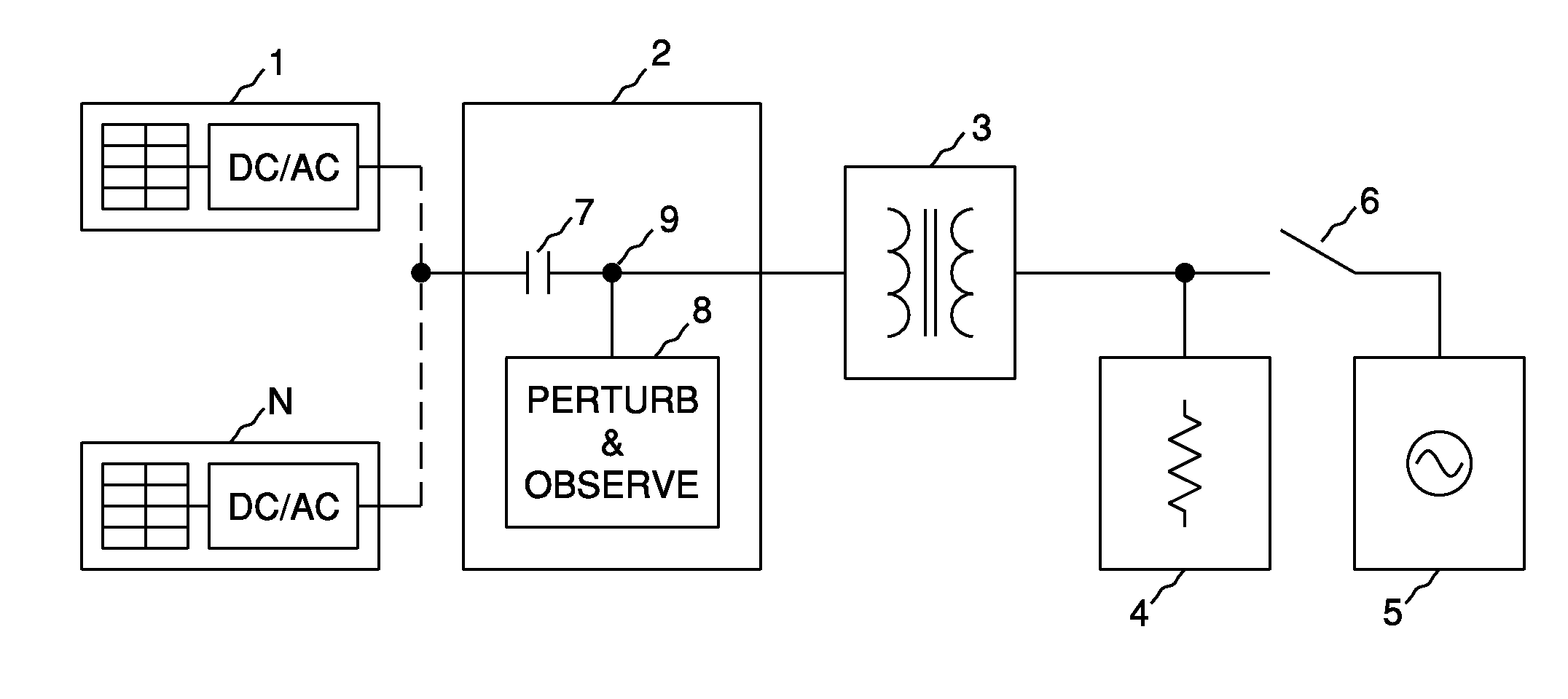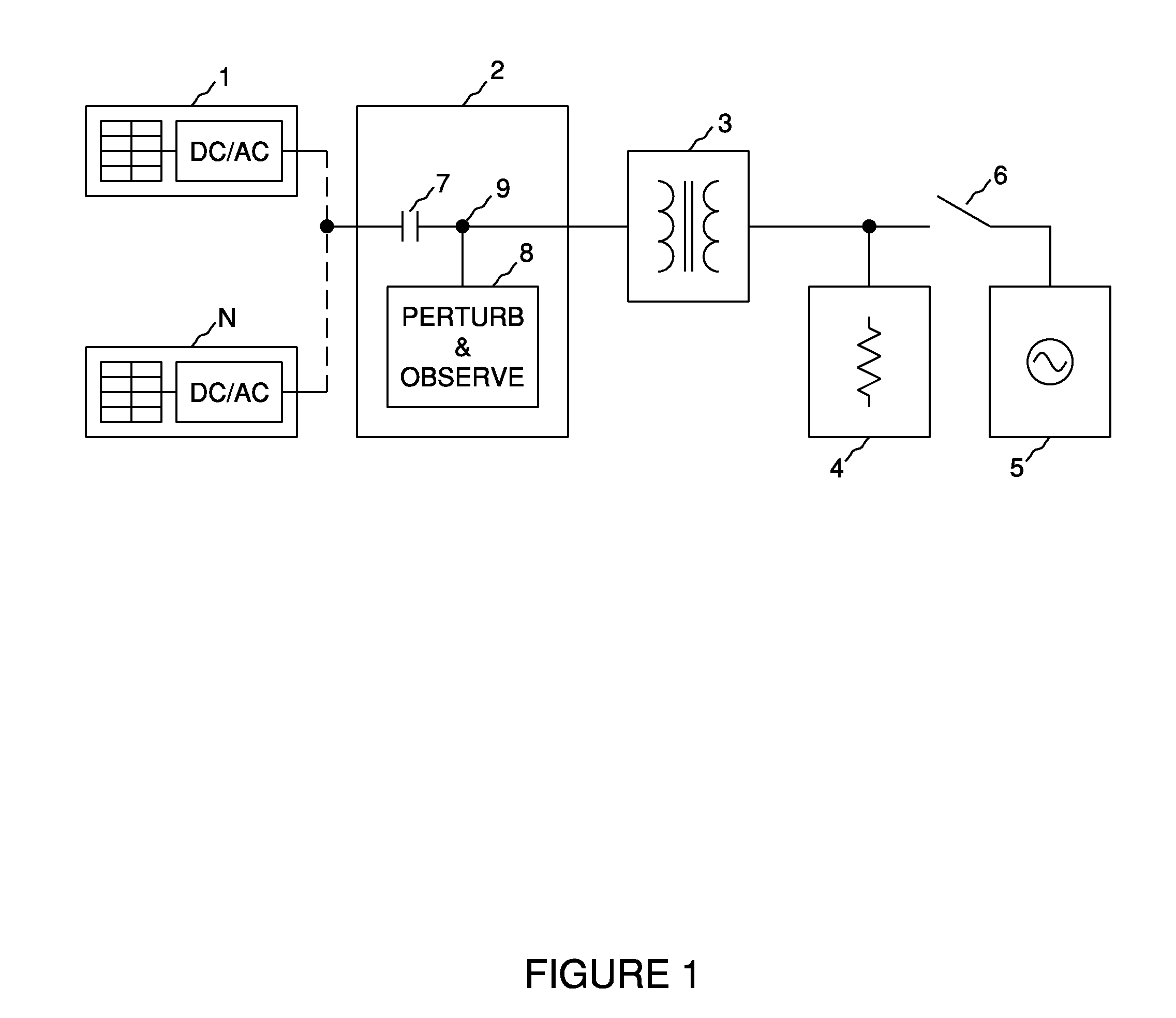Centralized islanding protection for distributed renewable energy generators
- Summary
- Abstract
- Description
- Claims
- Application Information
AI Technical Summary
Benefits of technology
Problems solved by technology
Method used
Image
Examples
Embodiment Construction
[0009]FIG. 1 shows how the invention is applied in a system. The system comprises a number of distributed photovoltaic power sources each with dedicated DC-to-AC power converters, 1 through N, protective anti-islanding device (the invention) 2, distribution transformer 3, grid-connected loads 4, AC grid source 5 and switch 6. The invention further comprises isolation contactor 7 and perturb and observe circuit block 8. Under normal operating conditions, isolation contactor 7 and switch 6 are closed and the net power transfer into grid source 5 is the combined output of DC to AC power converters, 1 through N, less the power consumed by grid-connected loads 4. An islanding fault condition is established when switch 6 is opened (functionally representing the loss grid source 5) and the power available from photovoltaic-to-AC power converters, 1 through N, matches the power consumed by grid-connected loads 4. An island or run-on condition may exist indefinitely as long as this source an...
PUM
 Login to View More
Login to View More Abstract
Description
Claims
Application Information
 Login to View More
Login to View More - R&D
- Intellectual Property
- Life Sciences
- Materials
- Tech Scout
- Unparalleled Data Quality
- Higher Quality Content
- 60% Fewer Hallucinations
Browse by: Latest US Patents, China's latest patents, Technical Efficacy Thesaurus, Application Domain, Technology Topic, Popular Technical Reports.
© 2025 PatSnap. All rights reserved.Legal|Privacy policy|Modern Slavery Act Transparency Statement|Sitemap|About US| Contact US: help@patsnap.com



